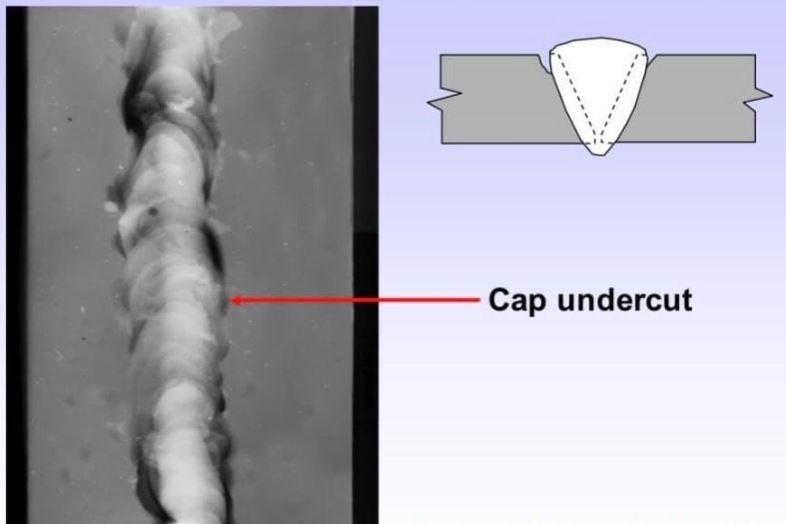Efficient Ways to Prevent Weld Undercut in Your Welding Projects
Efficient Ways to Prevent Weld Undercut in Your Welding Projects
Blog Article
Mastering the Art of Welding: Just How to Avoid Undercut Welding Issues for Flawless Construction Results
By recognizing the origin causes of undercut welding and carrying out reliable techniques to prevent it, welders can boost their craft to brand-new levels of quality. In the search of perfect construction results, grasping the art of welding to prevent undercut issues is not just an ability yet a need for those aiming for perfection in their work.
Understanding Undercut Welding

To protect against undercut welding, welders ought to ensure correct welding specifications, such as adjusting the existing, voltage, traveling speed, and preserving the correct electrode angle. By understanding the reasons of undercut welding and carrying out preventative steps, welders can accomplish top notch, structurally sound welds.
Sources Of Undercut in Welding
Comprehending the aspects that add to damage in welding is crucial for welders to create top quality, structurally audio welds. Undercutting happens when the weld metal does not correctly load the groove created in between the base metal and the previously transferred weld steel. Several elements can result in undercut in welding. One common reason is extreme warm input. Welding at high temperature levels for extensive durations can lead to the base steel melting even more than preferred, causing undercut. Insufficient welding existing or incorrect welding speed can additionally add to damage. Inadequate current might not supply sufficient heat to thaw the base and filler steels properly, while excessive speed can protect against proper blend, creating undercut. In addition, incorrect electrode angles or incorrect lantern manipulation techniques can create locations of low weld steel deposition, promoting undercut. Understanding these causes and carrying out appropriate welding techniques can help prevent undercutting issues, ensuring resilient and strong welds.
Methods to stop Undercutting

To mitigate the threat of undercutting in welding, welders can employ tactical welding strategies aimed at enhancing the high quality and integrity of the weld joints. In addition, using the right welding method for the certain joint setup, such as weave or stringer beads, can contribute to decreasing undercutting.
Using back-step welding methods and regulating the weld grain account can additionally my blog aid disperse warm uniformly and reduce the danger of undercut. Regular examination of the weld joint during and after welding, as well as implementing quality guarantee measures, can assist in detecting and attending to undercutting concerns without delay.
Value of Correct Welding Criteria
Selecting and maintaining suitable welding criteria is crucial for accomplishing successful welds with minimal issues. Welding specifications refer to variables such as voltage, current, take a trip speed, electrode angle, and protecting gas flow rate that straight impact the welding procedure. These criteria have to be carefully changed based on the kind of product being bonded, its thickness, and the welding method utilized.
Appropriate welding criteria ensure the correct amount of heat is put on thaw the base metals and filler material evenly. If the specifications are established expensive, it can result in extreme warmth input, creating spatter, burn-through, or distortion. On the other hand, if the specifications are also reduced, insufficient fusion, absence of infiltration, or undercutting may occur.
Quality Guarantee in Welding Workflow

Conclusion
Finally, understanding the art of welding requires a thorough understanding of undercut welding, its reasons, and methods to avoid it. By making certain correct welding criteria and implementing top quality guarantee methods, perfect fabrication outcomes can be accomplished. It is necessary for welders to constantly pursue quality in their welding operations to prevent undercut concerns and generate top notch welds.
Undercut welding, a common issue in welding procedures, happens when the weld metal does not effectively fill the groove and leaves a groove or depression along the bonded joint.To prevent undercut welding, welders must make certain correct welding specifications, such More Bonuses as changing the current, voltage, traveling speed, and maintaining the correct electrode angle. Poor welding existing or wrong welding speed can also add to undercut.To reduce the threat of damaging in welding, welders can utilize calculated welding techniques aimed at enhancing the high quality and stability of the weld joints.In final thought, mastering the art of welding requires a comprehensive understanding of undercut welding, its causes, and techniques to prevent it.
Report this page